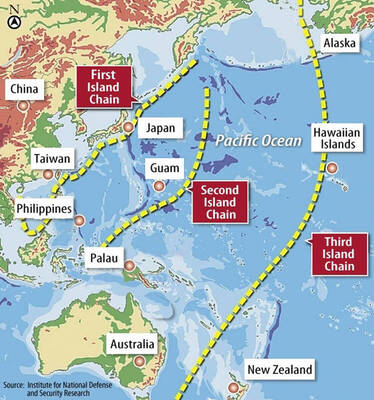Peng Wan-ru's (
Unfortunately, blood and fingerprint tests which came back later in the day forced police to rule out the possibility that the dead man was indeed responsible for Peng's murder.
Peng, then the director of the DPP's women's affairs department, disappeared after getting into a taxi to attend a meeting the night before a DPP party convention in Kaohsiung on Nov. 30, 1996. Her body was found three days later outside an abandoned warehouse in Kaohsiung, naked and with more than 30 stab wounds. According to reports, she had been raped.
Police have never given up hope of catching her killer, which they still to this day believe was the taxi driver that picked Peng up that fateful night. Their investigation, however, has seen little progress in the past three years, resulting in scathing public criticism against perceived inefficiency. Several suspects in police custody have confessed to Peng's murder. All were dismissed after police found testimony or evidence inconsistent with the facts of the murder.
Yesterday morning, around 6am, investigators thought they had made a breakthrough after police reported finding the body of a man who had apparently asphyxiated himself inside his taxi in Taipei County's Shihting (
A plastic tube from the car's exhaust pipe was running into the cab, where Chen Tsai-fu (
"Please forgive me," the note added. "Dear wife -- I'm sorry, please bury my body."
After discovering the note, a joint task force was formed by police units from Kaohsiung and Taipei to look into the link with Peng's death. However, it was confirmed later in the day that results of tests on Chen's blood and fingerprints did not match those left by Peng's killer at the scene of the murder.
Police have not completely ruled out a link between Chen and the Peng murder and investigations are continuing.
Peng's 1996 murder came at a sensitive time for the government, as it took place soon after another high-profile killing -- the Nov. 21 assassination of former Taoyuan County Commissioner Liu Pang-yu (
Peng's murder also pushed on to the front burner of public opinion a number of stalled bills in the legislature relating to women's safety, which have since been passed. Her husband, Hung Wan-sheng (
Peng, who had been dedicated to women's issues and vigorously advocated women's political participation, had gone to Kaohsiung on Nov. 30 to persuade DPP representatives to adopt a party platform that would ensure it reserves a quarter of its candidates' slots in popular elections for women.
Peng's husband expressed his disappointment, saying there seemed to be little hope left. "Now we can only rely on God. If the killer is ever arrested, it will be thanks to God's mercy," Hung said.
"I've never given up hope that the case would be solved some day. But I've also come to terms with the reality that it is not something we can force," he said.

The US government has signed defense cooperation agreements with Japan and the Philippines to boost the deterrence capabilities of countries in the first island chain, a report by the National Security Bureau (NSB) showed. The main countries on the first island chain include the two nations and Taiwan. The bureau is to present the report at a meeting of the legislature’s Foreign Affairs and National Defense Committee tomorrow. The US military has deployed Typhon missile systems to Japan’s Yamaguchi Prefecture and Zambales province in the Philippines during their joint military exercises. It has also installed NMESIS anti-ship systems in Japan’s Okinawa

‘WIN-WIN’: The Philippines, and central and eastern European countries are important potential drone cooperation partners, Minister of Foreign Affairs Lin Chia-lung said Minister of Foreign Affairs Lin Chia-lung (林佳龍) in an interview published yesterday confirmed that there are joint ventures between Taiwan and Poland in the drone industry. Lin made the remark in an exclusive interview with the Chinese-language Liberty Times (the Taipei Times’ sister paper). The government-backed Taiwan Excellence Drone International Business Opportunities Alliance and the Polish Chamber of Unmanned Systems on Wednesday last week signed a memorandum of understanding in Poland to develop a “non-China” supply chain for drones and work together on key technologies. Asked if Taiwan prioritized Poland among central and eastern European countries in drone collaboration, Lin

NO CONFIDENCE MOTION? The premier said that being toppled by the legislature for defending the Constitution would be a democratic badge of honor for him Premier Cho Jung-tai (卓榮泰) yesterday announced that the Cabinet would not countersign the amendments to the local revenue-sharing law passed by the Legislative Yuan last month. Cho said the decision not to countersign the amendments to the Act Governing the Allocation of Government Revenues and Expenditures (財政收支劃分法) was made in accordance with the Constitution. “The decision aims to safeguard our Constitution,” he said. The Constitution stipulates the president shall, in accordance with law, promulgate laws and issue mandates with the countersignature of the head of the Executive Yuan, or with the countersignatures of both the head of the Executive Yuan and ministers or

BACK TO WORK? Prosecutors said they are considering filing an appeal, while the Hsinchu City Government said it has applied for Ann Kao’s reinstatement as mayor The High Court yesterday found suspended Hsinchu mayor Ann Kao (高虹安) not guilty of embezzling assistant fees, reducing her sentence to six months in prison commutable to a fine from seven years and four months. The verdict acquitted Kao of the corruption charge, but found her guilty of causing a public official to commit document forgery. The High Prosecutors’ Office said it is reviewing the ruling and considering whether to file an appeal. The Taipei District Court in July last year sentenced Kao to seven years and four months in prison, along with a four-year deprivation of civil rights, for contravening the Anti-Corruption